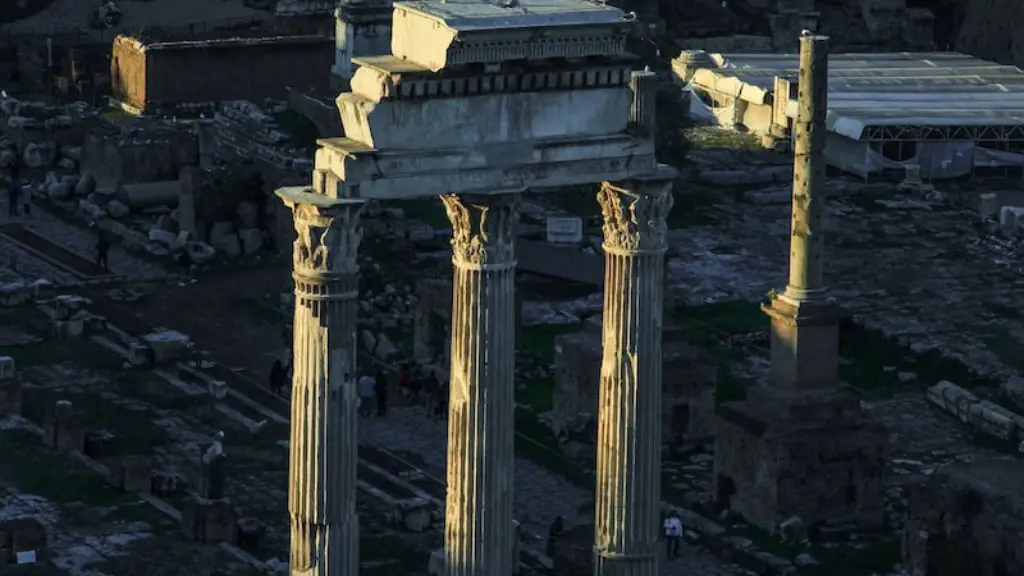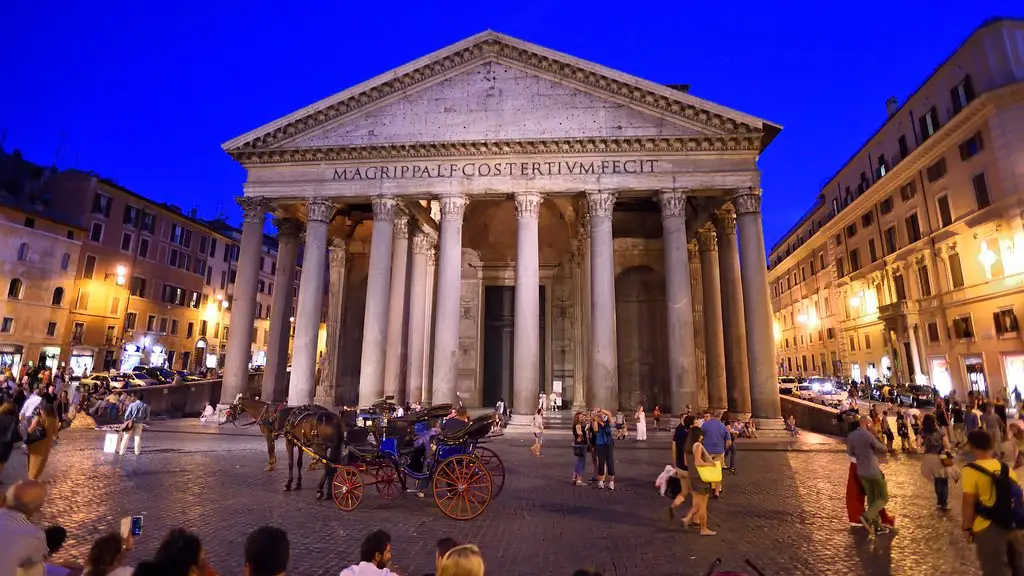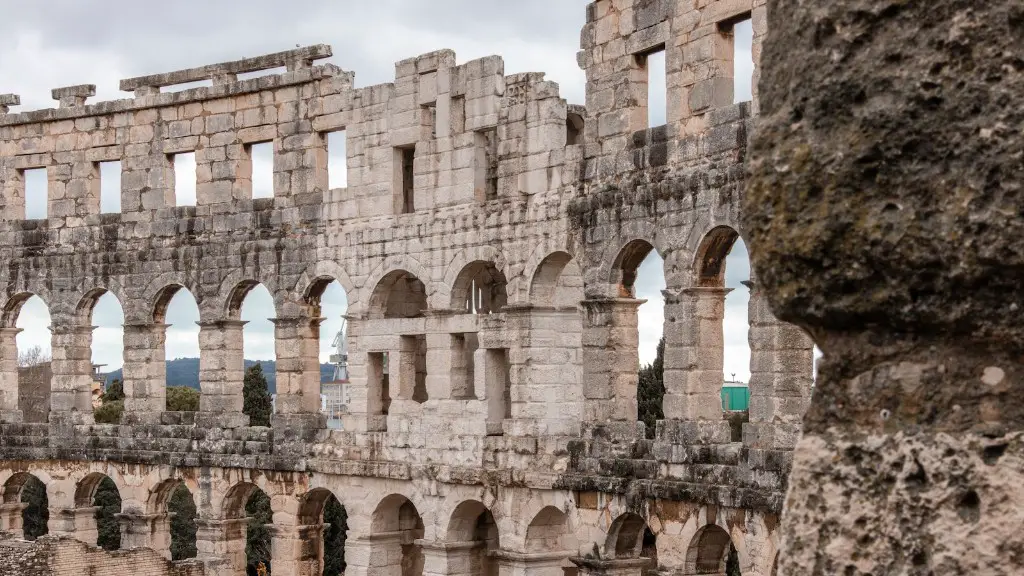In its heyday, Ancient Rome was the greatest civilisation in the world, stretching from Britannia in the north to Egypt in the south. People from all over the world would converge on the city of Rome for commerce, trade, entertainment and culture, and yet few of them actually spoke the same language. What language, then, was spoken by the inhabitants of this great metropolis, one of the most famous cities of all time?
The answer may surprise you – the most commonly spoken language in Ancient Rome was Latin. This is not to be confused with the Classical Latin of Julius Caesar, or the later Vulgar Latin of the Middle Ages, but rather a kind of proto-Latin that was spoken by the people of Rome and its environs. It was a language heavily influenced by other languages, such as Etruscan, Oscan and Greek, but it was nonetheless Latin – the ancestor of the modern Romance languages we know today.
The reason Latin was the most common language in Ancient Rome is simple: it was the language of the state. In other words, it was the language used in official documents, legal proceedings, and other aspects of governance. This made it the lingua franca of Rome, as it provided a common link for everyone, regardless of their ethnic or social background. This is why it was so widely spoken – it was the language of empire.
Interestingly, Latin was not the only language spoken in Ancient Rome. Other languages different dialects of Latin, as well as Greek, Etruscan, and Oscan, were also spoken by the people. But Latin was dominant: it was the language of government, of commerce, of art and literature. It was the language of the people, and it is no surprise that it was the most commonly spoken language of the time.
Latin has had a tremendous influence on the world. It did not just die out with the fall of the Roman Empire; rather, it spread across Europe and beyond, shaping languages, literature, and culture in its wake. It is no exaggeration to say that the Latin of Ancient Rome has become the foundation upon which our modern civilisation rests.
Role of Latin in the Roman Catholic Church
Latin also played a major role in the development of the Roman Catholic Church. The Church saw Latin as an important tool in propagating its message, and so from the 4th century AD onward it was officially used in religious rites and ceremonies. Latin became the language of the Church, used for prayer, instruction and administration. This set it apart from the other languages of the time, and ensured that it remained at the forefront of religious life in Europe for centuries to come.
Today, Latin remains an important part of the Church, with many prayers and texts still said in the language. Latin is, in fact, still the official language of the Holy See and is thus used in all official documents issued by the Vatican. It has thus played an important role in preserving the faith and traditions of the Roman Catholic Church, as well as in communicate its message to the world at large.
Importance of Latin in Education and Medicine
Latin has also been an important language in the fields of education and medicine. For centuries, Latin has been used in the disciplines of science and medicine, and it is still used today in many academic and professional settings. Its scientific terminology and precise grammar make it ideal for discussing complex topics in a succinct and logical way, and so it is still a language of instruction for medical and scientific students in many countries around the world.
In addition, Latin is still used as the official language of medicine, law and the sciences. Many medical terms, for example, are derived from Latin, and so a knowledge of Latin is essential for those wishing to pursue any of these fields. It is also still used in legal documents and can be helpful for students of law, as well as those wishing to gain an understanding of the legal system.
Latin’s impact on Modern Languages
Latin’s influence can also be seen in the modern Romance languages, which are descended from it. It is responsible for many of the words we use today in English and other languages, as well as the grammar and syntax that underlies the Romance languages. Latin can also be seen in many of the modern words we use in science, medicine, law and other fields, as well as in literature and other forms of expression.
Latin, then, has had a tremendous impact on the world. It was the language of the Roman Empire and beyond, spreading its influence in a way that no other language has before or since. It is no exaggeration to say that the Latin of Ancient Rome shaped the world we live in today, and it is thus a language that is still very much alive.
Retention of Latin after the fall of Rome
Despite the fall of the Roman Empire, Latin retained its place as the language of officialdom and education in Europe. Latin was still used as the official language of the Church, in legal documents, and in official declarations by governments and rulers throughout the Middle Ages. It was still taught in the universities until relatively recently, and indeed it is still an official language of the Catholic Church to this day.
This is testimony to the enduring influence that Latin has had on our lives, not just in its heyday but for centuries after. Latin was, and still is, an important language in the world, and its influence is still very much evident in our lives today.
Conclusion
In conclusion, Latin was the most commonly spoken language in Ancient Rome. It was used in the state not only to provide a common link between all the different relevant groups but also to exert political power over its subjects. Latin was also the official language of the Church and the official language of instruction in universities until recently. It has had a tremendous influence on our modern world, and we can still see its mark in the languages, literature, and culture of Europe and beyond.



